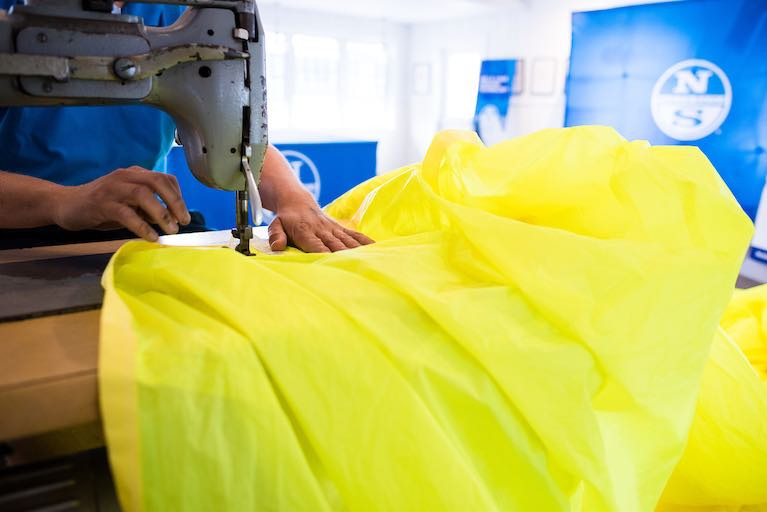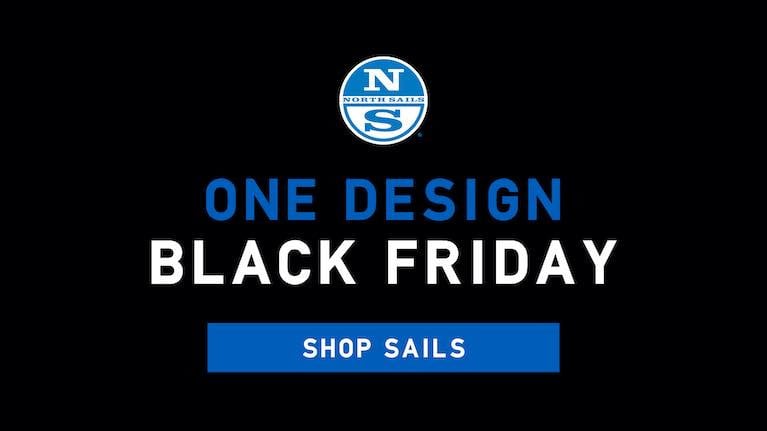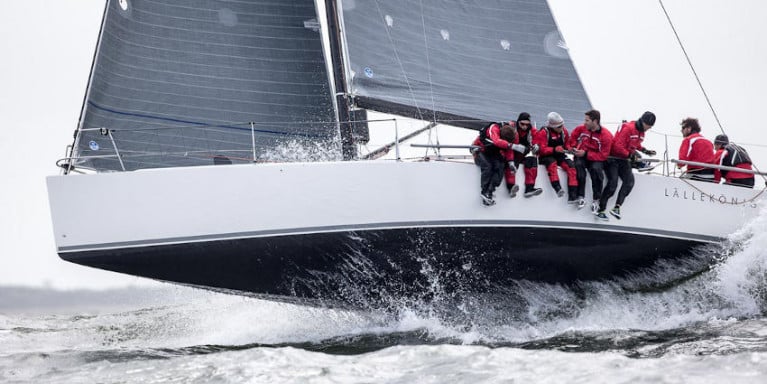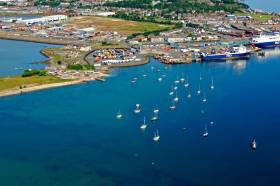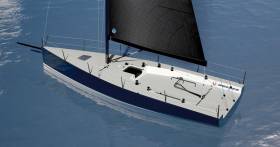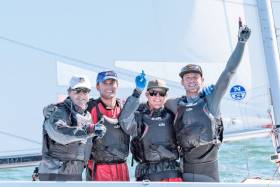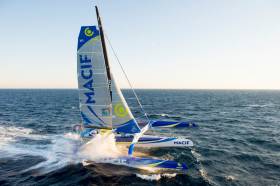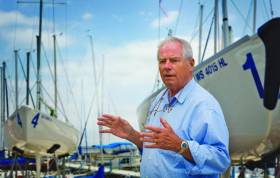Displaying items by tag: north sails
North Sails is excited to welcome world-renown sailor Ian Walker to their management team. Walker is a two-time Olympic medallist, an America's Cup veteran, and winner of the Volvo Ocean Race 2014-15 as skipper of Abu Dhabi Ocean Racing. He most recently served as Performance Director to the British Sailing Team, who claimed five medals at the 2020 Tokyo games. Walker's next career move puts him at the helm of North Sails UK for the world's leading sailmaker.
"Lowell North founded this business on a simple philosophy - get the best people and commit yourself to make the best product," says Ken Read, President of North Sails. "Ian sits amongst the best in our sport. He possesses a winning attitude and a level of knowledge that’s invaluable to our brand and all North Sails customers. Having sailed against Ian, I know he's a fierce competitor and simply a good guy. We're honoured to have him join our team."
"The expertise from someone of Ian's calibre is one of the greatest resources we can offer all of our customers," remarks John Welch, COO of North Sails. "Each North Sails Manager is more than a champion sailor or a sail expert. They become a part of a tight-knit team working towards the common goal of developing superior products and delivering exceptional support for sailors at every level of our sport."
"North has a long history and rich tradition of being at the forefront of sailmaking," Walker explains. “Joining North Sails is an excellent opportunity to be an active voice in the marine industry and part of the industry's leading brand. It's clear that everyone on the North Sails team has a passion for helping people get the most of their sailing, and my new role presents a unique opportunity to work alongside talented, like-minded sailors."
Walker's official start date is August 1st, 2022. He will be based at the North Sails loft in Gosport, UK.
Winter Sail Servicing: Protecting Your Greatest Assets
I am delighted to share the latest report from Shane Hughes and our North Sails service team here in Ireland.
2020 gave us the opportunity to start a new operation in Newcastle, Co Wicklow close to the biggest sailing centres in Ireland and it has been flying from the start.
Please follow the link here to read all the latest news from Shane and please do not hesitate to contact any of the North Sails Team if you are in need of sail service.
 Shane Hughes of North Sails
Shane Hughes of North Sails
I hope you enjoy the read.
North Sails Saving on One Design Sails
Calling all One Design Sailors, this is your last opportunity to make a nice saving on the World's Fastest One Design Sails in 2020.
If you have been promising yourself an early Christmas present then now is the time!
Check out the North Sails link for more info here and request a quotation or a call back.
Sail FAST
From your Team at North Sails Ireland
Want to know how to optimise your J/111?
Join North Sails experts Seadon Wijsen, Jack Orr, Jeremy Smart and Allan Terhune for a full hour of J/111 performance tips this evening, Tuesday 5 May.
The panel will also be taking questions in a Q&A session after their presentation in the special Zoom webinar from 8pm IST/BST.
Hosted by East Antrim Boat Club as part of their hugely successful Mid-Week Sessions programme of illustrated talks, the ‘Prof’ Maurice O’Connell himself will be on stage from 7.30pm next Wednesday 6 March to present North Sails Ireland’s popular upwind trim seminar.
Event organiser Tom Jobling says: "When one hugely successful event meets another hugely successful event … get there early and not only for the posh seats, because this promises to be a big night — we’re expecting a full house at EABC."
Using North U Sail Trim simulation and supporting software, the Prof will be demonstrating the theory and practice of upwind sail trim and how to optimise your set-up for differing winds and sea states.
He will also be delivering techniques on how to escape from starts, and hints on how not to lose time on the race course.
At the previous Mid-Week Sessions night in mid February, Olympic 49er athlete Matt McGovern provided a captivated dinghy audience at the Larne Lough club with tips, for example, on how to explode from a crowded start, too. The Prof will be taking questions at the end of his already famed presentation.
“It’s going to be the event of the year,” said an enthused EABC Commodore Steven Kirby. “As with all the Mid-Week Sessions events this, too, will be no charge and open to non-members.”
For more information see the new EABC website and Facebook page, or call Tom Jobling on 07809 691585.
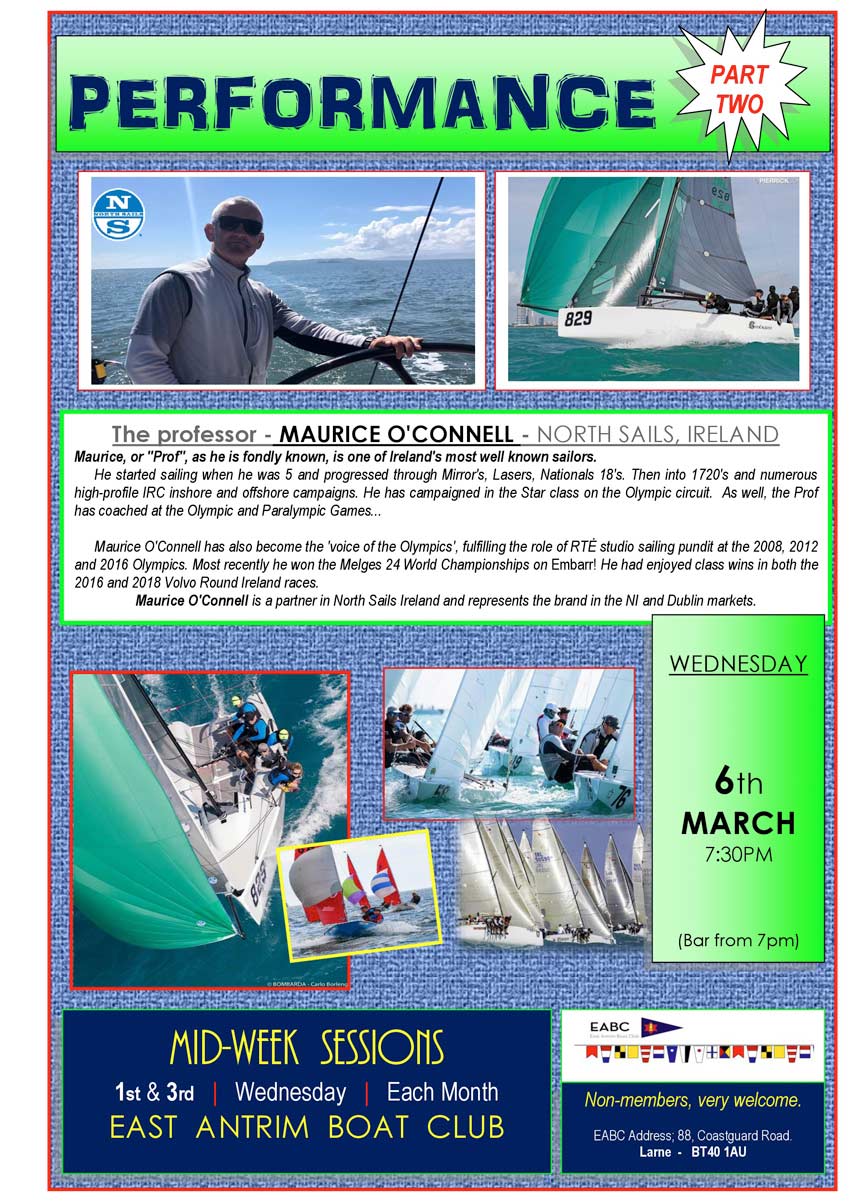
North Sails Designer Talks Inventory For New Mark Mills One-Design Class
#NorthSails - On the North Sails website, sail designer Mike Marshall outlines the development of North Sails’ 3Di inventory for the new Melges IC37 class.
When his design team were notified that North Sails would be the official sailmaker for the new one-design yacht, designed by Wicklow-based Mark Mills, Marshall knew it would be a challenge to cover the entire wind range with an inventory of just three sails — one main, one jib and one spinnaker.
“It was clear from the outset that 3Di was the only option for sails that could take the loads of a 37-foot boat yet perform well in winds anywhere from 5 to 25 knots,” he says.
“With 3Di, tapes are oriented in the direction of the loadings, giving outstanding stretch resistance, and Aramid and Dyneema fibers provide exceptional durability. So the 3Di decision was an easy one.”
Fabric is one aspect, but sail shape is something else, and Marshall and his team set about a painstaking development process to model the Melges IC37 sails in a variety of wind conditions and with a range of mast properties.
North Sails has much more on the story HERE.
North Sails Hails 2017 One Design Victory List
#NorthSails - As previously reported, North Sails celebrated a record-smashing year for offshore yachting titans competing with its 3Di performance sails.
But clients of the sailmaker — with a longstanding base in Myrtleville, Co Cork — also had a big year across the One Design classes around the globe.
In the Etchells class, Stella Blue helmed by Steve Benjamin won the 2017 Worlds in San Francisco at an event where fellow North Sails clients Senet Bischoff and KGB took the Corinthian title and finished third overall.
Elsewhere, in Toronto, Rossi Milev’s Clear Air sailed into first place at the J/24 Worlds, the same event where Lizzy McDowell’s U25 Howth Yacht Club team Scandal finished a respectable 42nd amid the mammoth international field.
Fellow Howth sailor Laura Dillon on Cloud finished 33rd in the Dragon World Championships in Cascais last June, which saw North Sails powering clients into first (Provezza Dragon, Andy Beadsworth), third (Alfie, Lawrie Smith), fourth (Desert Eagle, Hendrik Witzmann), fifth (Rocknrolla, Dmitry Samokhin), ninth (Louise, Grant Gordon) and 10th (Jeanie, Jens Rathsack) places overall.
And Spanish sailor María Perelló, using North Sails’ Radial R2, won the girls division at the Optimist Worlds in Thailand last July, where Ireland enjoyed had a strong showing in team racing.
North Sails is the world’s leading sailmaker for One Design classes with more national, world and Olympic class victories than all other sailmakers combined.
Record-Smashing 2017 Offshore For North Sails
#NorthSails - North Sails Ireland is looking back on a record-breaking year in 2017 for the global sailmaker's offshore clients, all of whom were using its 3Di performance sails.
Last January, Armel Le Cleác’h sailed Banque Populaire VIII around the world solo in the Vendée Globe in 74 days, 3 hours, 35 minutes and 46 seconds, breaking the solo (monohull) round-the-world record.
That same month, Francis Joyon with his IDEC Sport crew took the Jules Verne Trophy for the fastest global circumnavigation ever: an incredible 40 days, 23 hours and 30 seconds.
During the summer, records were falling so fast that North Sails had a hard time keeping up: Team Concise in the Round the Island; Mighty Merloe and Comanche in the Transpac; Joyon’s IDEC and Thomas Coville’s Sobeto Ultim in the Transatlantic Outright; Prospector in the Marblehead to Halifax.
Come November, Coville did it again, in tandem with Jean-luc Nelias on Sodebo in the Transat Jacques Vabre. Indeed, taking in his solo circumnavigation record in December 2016, he must hold a personal record for the most sailing records broken in a single 12-month period.
What’s more, North Sails estimates that Coville’s 3Di Endurance mainsail had 75,000 miles (the equivalent of three times around the world) logged when he broke that singlehanded east-about circumnavigation time.
More recently, in December, Christmas came early for Francois Gabart when he and his MACIF took the outright solo around-the-world record by lapping the planet in 42 days, 16 hours, 40 minutes and 35 seconds. (The team also set a new 24-hour distance mark to beat in November.)
The final record of 2017 went to LDV Comanche, who set the pace for future Rolex Sydney Hobart Races with a time of 1 day, 9 hours, 15 minutes and 24 seconds.
With that results in the books, North Sails Ireland in Myrtleville raises a toast to its offshore clients who continue to push its products to the limit.
North Sails Pays Tribute To Late Terry Kohler
#NorthSails - North Sails has paid tribute to Terry Kohler, owner of the company from 1984 to 2014, who died at his home in Wisconsin on Tuesday 20 September, aged 82.
Part of a business and political dynasty in his home state, Kohler was still at the helm of the company when it began supplying the sailing wardrobe for the Volvo Ocean Race. North Sails is now the exclusive sail supplier for the Volvo Ocean 65.
As a graduate of MIT, Kohler – who bought the company from Lowell North on the latter's retirement – saw the potential in marrying the latest technology with tried-and-tested deck knowledge to produce market-leading sails.
But he was also just as passionate about wildlife conservation, with he and his second wife Mary dedicating efforts to protect vulnerable marine species such as trumpeter swans, whooping cranes and Siberian cranes.
The North Sails website has more HERE.
North Sails To Be Exclusive Sails Supplier For Next Volvo Ocean Race
#VOR - The Volvo Ocean Race has appointed North Sails to be the exclusive official supplier of sails to the Volvo Ocean 65 one-design fleet in 2017-18.
North Sails supplied the sail wardrobe for the last Volvo Ocean Race, which saw the first ever one-design Volvo Ocean 65 fleet finish in June 2015.
According to VOR organisers, the durability of the Volvo Ocean 65 has already become a byword in the industry for its reliability – and North Sails' 3DiTM product has developed a similar reputation for its durability, powering six teams over 40,000 nautical miles in the last race with a "ground-breaking" limited sail wardrobe.
Nick Bice, who heads The Boatyard maintenance centre at the Volvo Ocean Race, explained that the success of North Sails in renewing their partnership with offshore sailing’s leading event was no foregone conclusion.
“North Sails was chosen against a lot of different criteria and not necessarily because of a long history in ocean racing and the Volvo Ocean Race,” he said.
“Many elements have contributed to the final decision, including the simple fact that the North Sails 3DiTM product is very good. The company has a strong commitment to the next edition of the race, not only from a product but also a personnel point of view.”
North Sails president Ken Read, added: “The Volvo Ocean Race has been and remains a big part of my life having participated in three editions. North Sails also has deep roots in this race, powering eight of nine race winners since Steinlager 2 in 1989.
“Performance and durability are a prerequisite for every part and piece of the new one-design boats. Proven as the highest performing and most durable sails ever made, North Sails’ patented 3Di product fits the bill perfectly.”
The next step is to finalise designs for the sail wardrobe, which will be carried out once the 2017-18 route is confirmed by mid-2016. After that comes the manufacturing process, followed by the delivery of the sails to the 13th edition teams in April 2017.
Currently, practicing crews may use new or used ‘generation 1’ designs for independent training as well as two-boat testing. Race rules will not permit two-boat testing when the new inventory is delivered next April.
“The idea is that all teams will match up for the first time on the start line in Alicante, all with the same amount of knowledge,” said Bice.
As for what improvements can be expected with the next generation sail wardrobe, he added: “The sails will continue to be reliable, that is a big factor. There will be improved flying shapes based on what has been learned about the boats and a customised wardrobe depending on the race route.”


























